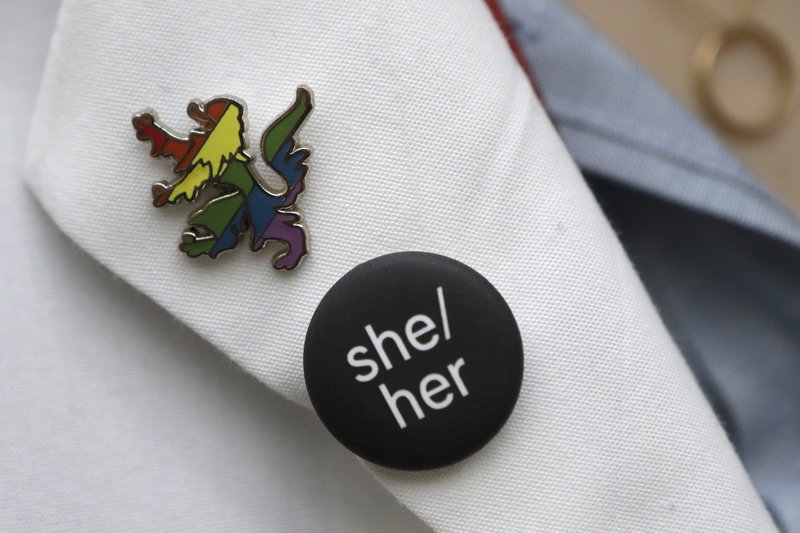Medical schools are beefing up education on LGBTQ-health issues. And some schools are making a major push to recruit LGBTQ medical students, backed by research showing that patients often get better care when treated by doctors more like them.
Ask any LGBTQ patient about awkward doctor visits and chances are they'll have a story to tell.
Aliya Feroe recalls the flustered OB-GYN who referred her to another physician after learning she identified as queer. For Rhi Ledgerwood, who was designated female at birth, identifies as trans and doesn't have sex with men, it was a doctor advising about condoms and pregnancy prevention. For Tim Keyes, who came out as gay at age 17, it's when doctors automatically assumed he sleeps with women.
When being heterosexual is presumed even in doctors' offices, those who identify otherwise can feel marginalized and less likely to seek medical care, contributing to health problems that include high rates of depression, suicidal behavior, alcohol and drug use and inadequate health screenings, LGBTQ advocates say.
Feroe, Keyes and Ledgerwood -- all pursuing medical careers -- are part of the trend.
"LGBTQ physicians deserve an equal standing in the medical community and LGBTQ patients deserve the same quality of care awarded to anyone else," said Feroe, a third-year Harvard medical student.
Increasing LGBTQ enrollment and training in LGBTQ health issues in medical schools can help achieve those goals, advocates say.
Exact numbers of LGBTQ medical students and doctors are unknown. In 2018, the American Medical Association added sexual orientation and gender identity as an option for members to include in demographic profiles the group compiles. Of the 15,000 doctors and students who have volunteered that information so far, about 4% identify as LGBTQ. That's similar to Gallup estimates for the general U.S. population, although LGBTQ advocates believe the numbers are higher and rising as more people are willing to "out" themselves.
This past fall, Harvard's entering class of medical students was 15% LGBTQ, a milestone that is no accident.
The Association of American Medical Colleges' primary application used by U.S. schools began offering prospective students the option of specifying gender identity and preferred pronouns in 2018. Harvard's school-specific application allows applicants to identify as lesbian, gay, bisexual, transgender or queer. A response is not required, but the option "sends a message that you're wanted," said Jessica Halem, the medical school's LGBTQ outreach director.
Feroe had intended to present herself as straight in medical school, fearing doing otherwise would be off-putting for patients and make her feel like an anomaly among her peers.
But Harvard has an active LGBTQ student group on campus, faculty members who ask students if they prefer being called her, him or they, and coursework addressing LGBTQ medical care. Halem said that includes what screening tests are needed for women who have sex with transgender men, the hormone treatments to prescribe for transgender patients, and what it means when someone identifies as pansexual.
Feroe said she was "blown away" during a recent surgery rotation at one of Harvard's affiliated hospitals, where a few patients were accompanied by same-sex partners. The doctors she was training with "smoothly asked about people's lives" and were completely comfortable "when learning patients were queer," she said.
A 2017-18 Association of American Medical Colleges report found that while most schools include some LGBTQ coursework, half reported three or fewer lectures, group discussions or other learning activities.
A Section on 02/21/2020

